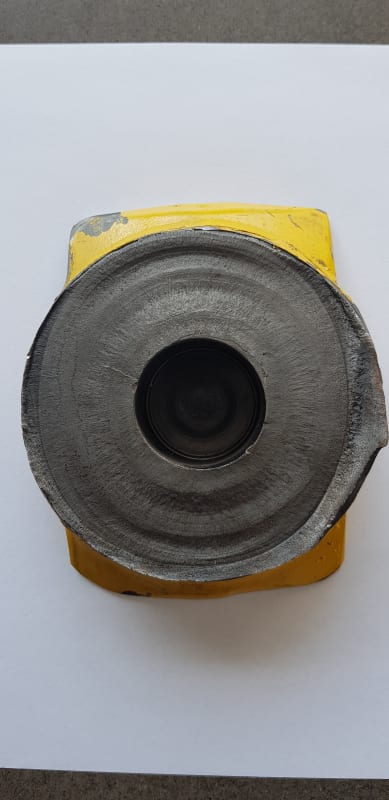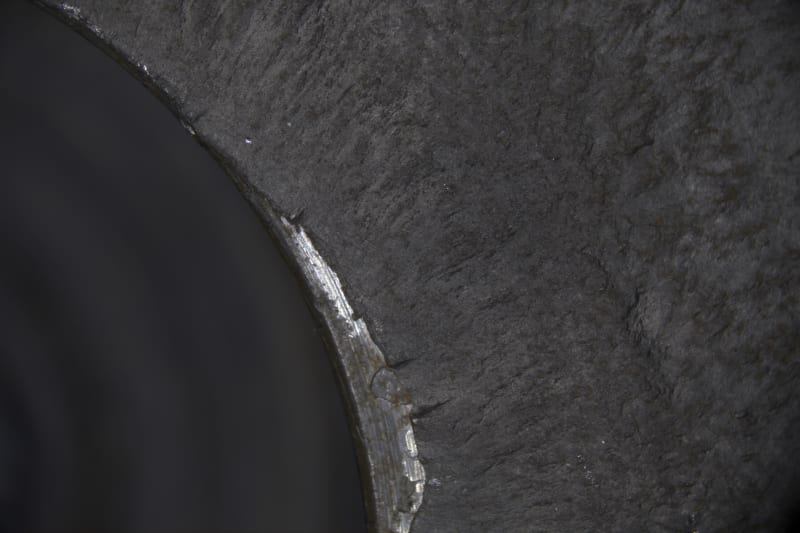Hi,
I am looking into a failure where the component has two parts (cylinder rod and rod eye) welded together and is subject to tension only. Refer to the attached image.
The outer edges (shear lip?) have progression marks indicating that the was a crack present and grew over time. This would indicate that the crack has progressed from the outside toward the center.
Fracture surface:

Shear lip 1:
[URL unfurl="true"]https://res.cloudinary.com/engineering-com/image/upload/v1568091374/tips/TS-20190909132300868_kz53wy.tiff[/url]
Shear lip 2:
[URL unfurl="true"]https://res.cloudinary.com/engineering-com/image/upload/v1568091450/tips/TS-20190909134001624_n0ayzr.tiff[/url]
A few questions:
1)Is there a scenario where the crack could initiate from the center and radiate outward based on the fracture surface? There is no indication of beach marks toward the center. I was initially looking at a fracture from the center outward, however the beach marks on the outer surface would rule that out?
2) Does a shear lip typically indicate the final part of the fracture?
Thanks for the help.
I am looking into a failure where the component has two parts (cylinder rod and rod eye) welded together and is subject to tension only. Refer to the attached image.
The outer edges (shear lip?) have progression marks indicating that the was a crack present and grew over time. This would indicate that the crack has progressed from the outside toward the center.
Fracture surface:

Shear lip 1:
[URL unfurl="true"]https://res.cloudinary.com/engineering-com/image/upload/v1568091374/tips/TS-20190909132300868_kz53wy.tiff[/url]
Shear lip 2:
[URL unfurl="true"]https://res.cloudinary.com/engineering-com/image/upload/v1568091450/tips/TS-20190909134001624_n0ayzr.tiff[/url]
A few questions:
1)Is there a scenario where the crack could initiate from the center and radiate outward based on the fracture surface? There is no indication of beach marks toward the center. I was initially looking at a fracture from the center outward, however the beach marks on the outer surface would rule that out?
2) Does a shear lip typically indicate the final part of the fracture?
Thanks for the help.

